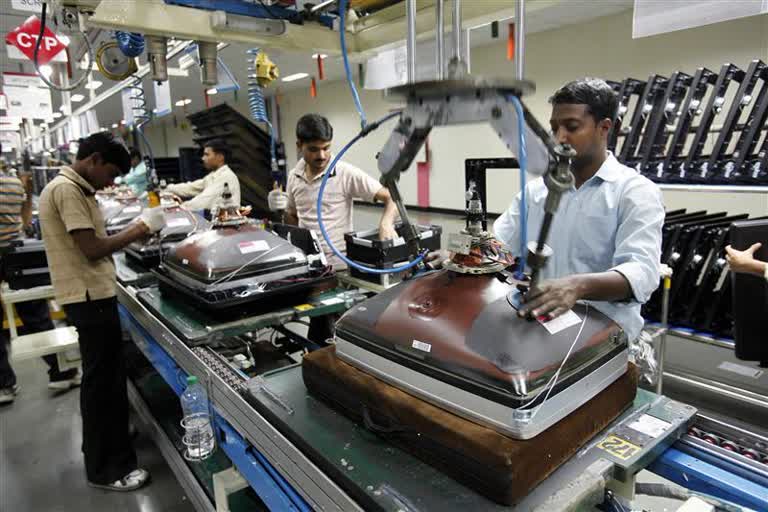Hyderabad: The Union Government has introduced the Industrial Relations Code Bill in the Lok Sabha recently. Said to be key game changer for improving the labour conditions in the country and for improving ease of doing business in the country, once approved by the Parliament will replace the existing the Trade Unions Act, 1926, the Industrial Employment (Standing Orders) Act, 1946 and the Industrial Disputes Act, 1947.
Know how the proposed legislation will change the existing set up.
(1) Industrial Disputes: Works Committee which is a bipartite forum and the Grievance Redressal Committee were brought under Chapter-II of the Code. These two forums try to resolve the grievances, and other local issues at Unit level and work as a preventive mechanism. The grievances/issues which are not resolved under these forums may take the shape of an “Industrial Disputes”.
(2) Trade Union Registration: The present Trade Union Act 1926 provides for minimum requirement of 7 members for registration of a Trade Union. The proposed code provides for minimum of 10% of workers to apply for registering of a trade union.
In case, where 10% of workers are less than 7, then a minimum of 7 workers shall be required to make an application for registration. In case where the 10% of workers exceed 100, hundred workers shall be sufficient for registering the trade union. The new provisions would discourage formation of trade unions with just 7 workers.
(3) Restriction on outsiders in Trade Unions: Only two Office bearers can be Outsiders. A retired employee is not treated as Outsider. Any outsider, including a Minister, or any person holding an office of profit cannot become an office-bearer of a Trade Union. These provisions are made to reduce the involvement of Outside leaders in running a trade union.
(4) Recognition of Trade Unions: The bill also proposes a more stringent threshold for a trade union to be considered as a sole negotiating union. A union will be recognized as the sole negotiating union only if it has the support of 75 per cent or more of the workers on the muster roll in an establishment. This provision, will reduce the multiplicity of Unions in one Industry/Unit.
(5) Time limit for completing disciplinary proceedings: The employer has to complete the disciplinary proceedings within 90 days, wherein the worker was kept under suspension pending enquiry. Subsistence allowance to be paid is 50% of wages upto 90 days; 75% of the wages beyond 90 days, upto 180days, and beyond 180 days full salary to be paid. This provision will curb the prolonged enquiry proceedings, keeping the worker under suspension.
(6) Labour Commissioners as Chairman of Industrial Tribunal: The Labour Commissioner (Officers of Gr. III Central Labour Service) and Joint Commissioner of Labour of State Govt, and Gr. III officers of Indian Legal Service were made eligible for the post of Chairman of Industrial Tribunal/Presiding Officer of Labour Court.
This will ensure speedy disposal of pending Cases in Labour Court/Industrial Tribunals since these Officers are well acquainted/familiar with the labour laws.
The bill provides for setting up of a two-member tribunal (in place of one-member), thus introducing a concept that some of the important cases will be adjudicated jointly (like Division Bench) and the rest by a single-member resulting speedier disposal of cases.
(7) Prohibition of Strikes and Lockouts: In the previous Industrial Disputes Act 1947, only the Strikes/Lockouts in “Public Utility Services” were prohibited. But now in the new Code, Strikes/Lockouts are prohibited in all Industries/establishments. Strikes/Lockouts cannot be resorted to without giving 14 days notice to the employer/ Conciliation Officer. Stringent provisions were made making it almost impossible for the workmen/Unions to go on a “legal Strike”.
(8) Restrictions were imposed on workmen not to resort to coercive actions like go-slow, gherao, demonstrations at work premises, as well as at residences of employers/Managers during pendency of proceedings before Conciliation Officer or before Tribunal and National Tribunal. With this provision, industrial violence can be reduced.
(9) The Chapters IX and X relating to retrenchment, lay-off, closure etc, are not applicable to establishment employing less than 50 workers, and seasonal establishments. Chapter IX is applicable to establishments employing 50 to less than 300.
(10) Re-skilling fund for retrenched workers: The retrenched workman needs re-skilling to get new employment opportunities. A fund will be formed through contribution from employers equivalent to ‘15 days of wages last drawn’ by workers being retrenched.
(11) Penalties: Nineteen offences have been specified from Sec.103(1) to Sec.103(21) in a very elaborate manner in the Code. The fines/imprisonments have been enhanced for both the employers, workers, Office bearers/Executive of the Unions, making the Code more stringent.
The main purpose of these labour laws reforms is to codify various labour laws into one code, with a view to simplify the laws, for better monitoring, to ensure easy compliance so that both the employers and workers are benefited.
The other objective for codifying the laws to make India more attractive Country for foreign investments, to enable the manufacturing here globally competitive with an ultimate goal of “Make in India” fully successful.
Read more:Private hospitals may suspend cashless service for CGHS/ECHS beneficiaries
This new code will ensure peaceful industrial relations, strikes free, agitations free, violence free industrial atmosphere. Strict compliance of the Code is expected since non-compliance leads to heavy penalties.
Despite criticism by some corners, this new Code has to be welcomed, since it is aimed to achieve industrial growth by maintaining peaceful industrial working atmosphere.
[Written by Dr. K.K.H.M. Syam Sundar. He worked as Dy. Chief Labour Commissioner and holds a Ph.D. in Law from NALSAR University, Hyderabad.]



